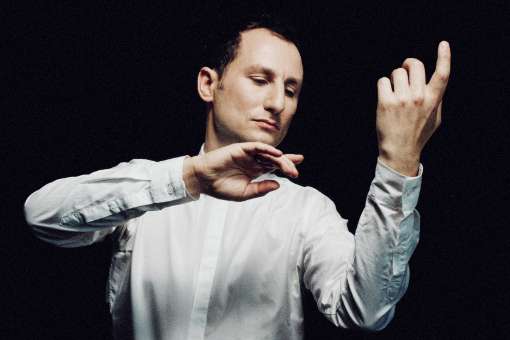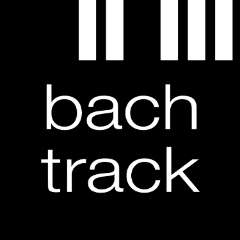Perhaps like all of Berlioz's music, Harold en Italie is sometimes misunderstood. But it is a masterpiece where the composer gave free rein to all his inventive and creative genius. When I first started, this was a work that left me less than fully convinced, one which I found heavy and long – the worst thing for a French solo viola player! But my approach has been changed by working with conductors of the calibre of Marc Minkowski, Valery Gergiev and especially Sir John Eliot Gardiner: I've started to tackle the work in the way I would an opera in which I need to learn to breathe life into a role. In this case, the role is of an inspired, sensitive and profound traveller – Berlioz himself, perhaps.

It was Paganini, a great admirer of Berlioz, who commissioned the work. But he was looking for a piece that could play to his strengths, a far more virtuosic piece then the composer eventually provided: Paganini didn't even want to play it! And yet, once he heard the work performed, Paganini publicly apologised to Berlioz, on his knees in front of a whole orchestra.
Once I had been taught how to interpret, many things changed my mind: first of all, hearing the piece played on period instruments change my perception of it, resulting, as it does, in a profound change of tonal colours and therefore of expression. The effect is truly different in the brass, but also for the highest sounds in the strings. Natural brass and pure catgut strings provided greater softness, which helps the general balance and gives a sonority which gains in colour what it loses in weight. Berlioz is a master of orchestration and brings about unexpected marriages of instruments, creating an atmosphere so far in advance of its time that it seems to me to prefigure impressionism.
Of course, my understanding of the solo viola part has also evolved greatly. We're not dealing with a traditional romantic concerto, to be sure, but what Paganini may have failed to understand is that the viola player is Harold (who is perhaps Hector himself) and must play a leading role in this dramatic fresco which traces the artistic travels in Italy that were so life-changing for Berlioz. It took a fair amount of time for me to be able to feel the expression hidden beneath each of the viola's interventions, not to mention the sentiments evoked during the tutti in which the viola remains silent! It moves from melancholy to happiness, joy and even pride, by way of spirituality, faith, enthusiasm, love and even anguish and fear, before ending happily in a place none other than at the heart of a string quartet!
And that, by the way, is the most difficult aspect of the work. You have to inhabit it, to become a narrator by imagining a text under every musical phrase, to listen to the orchestra at the same time as commenting on it, to react to the different characters embodied by its instruments. And like an opera singer, you have to know how to project your sound above the orchestra or blend into it, to find the right sound to engage in the dialogue.
From 2015, I've had the good fortune to work on this score more deeply with Sir John Eliot Gardiner. A little at a time, always giving me musical, harmonic or rhythmic reasons, John Eliot taught me to grow my knowledge and understanding of Harold's character, what he is living and feeling. Very naturally, he turned the work into a truly theatrical piece, complete with staging. The reason this approach is successful is that, at the start, when Harold has not yet become part of the orchestra, at that first oh-so-intimate meeting with the harp and then with the strings, brass or woodwind, each moment expresses the feelings that Berlioz experienced in Italy. He found himself solitary and melancholic, but at the same time inspired by the whole culture of the country, by the quality of the opera but also of Italy's popular rural musicians (pifferari), by the landscapes and colours, and even by the anguish of the dangers that he felt in certain parts of the country! This interpretive reading allows one to better understand the work, to present it as a story and to bring with you the audience who will be following in Berlioz's footsteps.
Unsurprisingly, each one of the conductors with whom I work has their own precise and interesting ideas about Harold. John Eliot's idea thrills me, but is not explicitly requested by Berlioz (although his idea of positioning the solo viola "in the foreground, set apart from the orchestra" gives an indication). It allows me to be even stronger in inhabiting each phrase, with or without staging, and many other conductors like Daniel Harding, François-Xavier Roth, Marc Minkowski or Valery Gergiev imbue this music with a narrative power which inspires me greatly.
Harold in Italy has been a defining work in the history of the viola, giving it such an original and unique place in the string family. The work continues to inspire not only conductors but composers. In 2015, after having played Harold with John Eliot for the first time, I was so thrilled by this new interpretation that I spoke about it enthusiastically to the German composer Jörg Widmann. He loved this visual dramaturgy so much that he composed a concerto for me which is packed with narration, with the journey and the interaction with different orchestral instruments. The work even contains an orientation card giving precise instructions for the stage movements of the soloist. Has Widmann perhaps written a Harold for our times?
But still, today, one asks the question: who is the true Harold? The "Childe" of Byron's poem? Berlioz himself? Or perhaps the often lonely travelling artist, or the viola player searching for his place?
I even ended up trapping John Eliot at his own staging game: during our international tour, my positions and perambulations round the stage differed somewhat according to each hall, and the conductor occasionally lost sight of me and didn't know where to find me! From which he gave me the name "Waldo", in reference to "Where's Waldo?" (which is "Où est Charlie?" in French).
Harold, Hector, Waldo, Charlie, Antoine… Now there's a real quest for identity!


